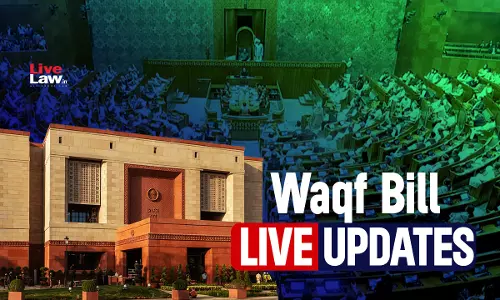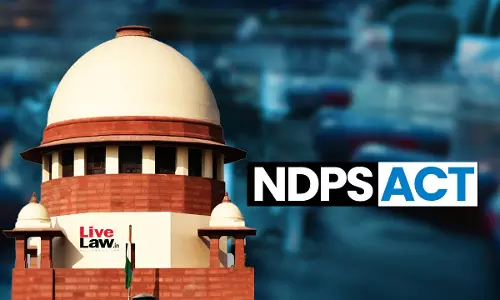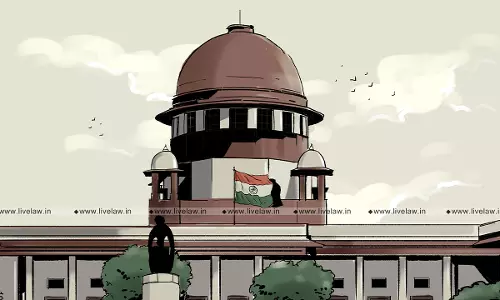“Recovery Evidence” Under Section 27 Of The Evidence Act- Questions & Answers By Justice V Ramkumar [Part-IV]
![“Recovery Evidence” Under Section 27 Of The Evidence Act- Questions & Answers By Justice V Ramkumar [Part-IV] “Recovery Evidence” Under Section 27 Of The Evidence Act- Questions & Answers By Justice V Ramkumar [Part-IV]](https://www.livelaw.in/h-upload/2023/11/27/1500x900_506320-questions-and-answers-by-justice-v-ramkumar.webp)
Q.16 The “disclosure statement” of the accused admitted in evidence contains inculpatory portions also. Is it permissible for the Court to separate and exclude the inculpatory portion from the admissible portion of the statement ? Ans. Yes. (Vide Para 16 of Pulukuri Kotayya AIR 1947 PC 67; paras 14 and 15 of Mohmed Inayatullah v. State of Maharashtra AIR 1976 SC 483 = (1976)...
Q.16 The “disclosure statement” of the accused admitted in evidence contains inculpatory portions also. Is it permissible for the Court to separate and exclude the inculpatory portion from the admissible portion of the statement ?
Ans. Yes. (Vide Para 16 of Pulukuri Kotayya AIR 1947 PC 67; paras 14 and 15 of Mohmed Inayatullah v. State of Maharashtra AIR 1976 SC 483 = (1976) 1 SCC 828 – P. N. Bhagwati, R. S. Sarkaria - JJ).
In para 58 of Rijo v. State of Kerala 2009 KHC 1145 – K. Balakrishnan Nair, P. Bhavadasan - JJ, it was held that even if the statement relied on by the prosecution contains inculpatory portion, it is not the law that the statement should be rejected in its entirety. The Court can exclude the inculpatory portion and take into consideration the rest of the statement.
Q.17 Will not the mind of the Court be influenced or prejudiced if the entire confessional statement of the accused is produced and relevant portions admissible under Section 27 of the Evidence Act are marked as exhibits ?
Ans. According to the verdict of a Division Bench of the Kerala High Court in K. Babu v. State of Kerala (Crl. Appeal No: 136/2018) pronounced on 26-10-2023, it will. But in the above case the entire statement of the accused was not marked as an exhibit. Only the relevant and admissible portions were marked as separate exhibits.
Wholesale marking of the entire statement of the accused may have a tendency to influence and prejudice the mind of the Court. (Vide Venkatesh @ Chandra & Anr v. State of Karnataka – [2022 KHC 6440]; In Re: To Issue Certain Guidelines Regarding Inadequacies and Deficiencies in Criminal Trials – [2017 KHC 6234] and Naresh alias Nehru v. State of Haryana – [2023 SCC OnLine SC 1274].
As observed by Justice Anna Chandy in Mohammed v. State of Kerala – [1962 KLT 120]:
“It is very easily said that the incriminating portion of a lengthy confessional statement should be excluded. But it is a very difficult mental process to close your eyes to the details in the confessional statement and see only the bracketed portions and remain uninfluenced by the confession of the accused. This feat is possible of performance only by a few specially trained experts. There is no reason why the overburdened judicial officers should be saddled with an additional burden which has not the support of law or procedure.”
NOTES BY THE AUTHOR: In all the decisions relied on by the Division Bench the entire confessional statement of the accused had been marked. But, in the case decided by the Division Bench only relevant portions admissible under Section 27 of the Evidence Act alone had been marked. Moreover, merely because the entire confessional statement of the accused recorded under Section 161 Cr.P.C. has been marked, it cannot be held that it will influence and prejudice the mind of the Court. There are very many materials which are mandatorily to form part of the Court records under Section 173 (5) Cr.P.C. That will include the “charge-sheet”, “statements of witnesses and the accused” recorded under Section 161 Cr.P.C., “confession of the accused” recorded under Section 164 (4) Cr.P.C., “statements of witnesses” recorded under Section 164 (5) Cr.P.C., proceedings of Test Identification Parade, postmortem reports and other medical certificates etc. One fails to see as to how the confessional statement of the accused alone can influence or prejudiced the mind of the Court. Moreover, the law is well settled that even if a document is marked as an exhibit, such marking by itself will not dispense with proof. De hors the marking, the party concerned will have to prove the contents of the document.
My article titled “SECTION 27 CONTINUES TO BECOME A “SOFT TARGET” OF CONSTITUTIONAL COURTS FOR RECORDING UNMERITTED ACQUITTALS” may be perused.
Q.18 Whether a “disclosure statement” by the accused regarding the “place” where the offence of murder was committed, is admissible under Section 27?.
Ans. Yes. (Vide para 74 of Charandas Swami v. State of Gujarat (2017) 7 SCC 177 - Kurian Joseph, A. M. Khanwilkar - JJ).
Q.19 Accused in a theft case tells the investigating officer that if he is taken to the place he shall show the “person” to whom he had sold the (stolen) necklace. Will it not come within the purview of Section 27 ?.
Ans. Going by the decision of a learned single Judge of the Kerala High Court in Joseph v. State of Kerala 1997 KHC 297 = ILR 1997 (3) Kerala 632 – N. Dhinakar – J, it will not come under Section 27. According to the said decision, the words “discovery of fact” embrace only the “place” from where the object is produced and not the “person” from whom it is produced. Reliance was placed on H.P. Admn. V. Om Prakash AIR 1972 SC 975 - P. Jaganmohan Reddy, D. G. Palekar – JJ, where no such proposition was laid down.
Joseph (Supra – 1997 KHC 297) was dissented from in paras 15 and 21 of Ayyappan v. State of Kerala 2004 (3) KLT 254 = (2005) Cri.L.J. 57 – R. Basant – J, in the light of the decision of the Division Bench of the High Court of Kerala in Raveendran v. State 1989 (2) KLJ 534 – S. Padmanabhan, P. K. Shamsuddin – JJ.
See also –
- Mehboob Ali v. State of Rajasthan (2016) 14 SCC 640 - H. L. Dattu – CJI, Arun Mishra - J – Para 20.
- Yakub Abdul Razak Memon v. State of Maharashtra (2013) 13 SCC 1 – P. Sathasivam, Dr. B. S. Chauhan – JJ – Paras 2914 to 2916 ;
- Prasad Ramakant Khade v. State of Maharashtra AIR 2000 SC 138 = (1999) 8 SCC 493 – 3 Judges – G. B. Pattanaik, S. P. Kurdukar, K. T. Thomas – JJ - Para 5.)
Q.20 Will the discovery evidence become inadmissible merely because the “Police” already knew where the objects were hidden ?
Ans. Yes. If the police had knowledge about the place of concealment otherwise than through the accused, then there is no discovery of fact on the basis of information received from the accused person within the meaning of Section 27. (Vide –
- Aher Raja Khima v. State of Saurashtra AIR 1956 SC 217 – 3 Judges - Vivian Bose, T. L. Venkatarama Ayyar, N. Chandrasekhara Aiyar – J;
- Jaffar Hussain Dastagir v. State of Maharashtra AIR 1970 SC 1934 = (1969) 2 SCC 872 – 3 Judges – S. M. Sikri, G. K. Mitter, P. Jaganmohan Reddy – JJ).
- Vijender v. State of Delhi (1997) 6 SCC 171 – M. K. Mukherjee, B. N. Kirpal – JJ.
- Krishan Mohar Singh Dugal v. State of Goa AIR 1999 SC 3842 = (1999) 8 SCC 552 – G. T. Nanavati, R. P. Sethi – JJ.
- State of Haryana v. Jagbir Singh AIR 2003 SC 4377 = (2003) 11 SCC 261 – Doraiswamy Raju, Arijit Pasayat – JJ.
- State of Rajasthan v. Kashi Ram AIR 2007 SC 144 = (2006) 12 SCC 254 – B. P. Singh, Tarun Chatterjee – JJ.




